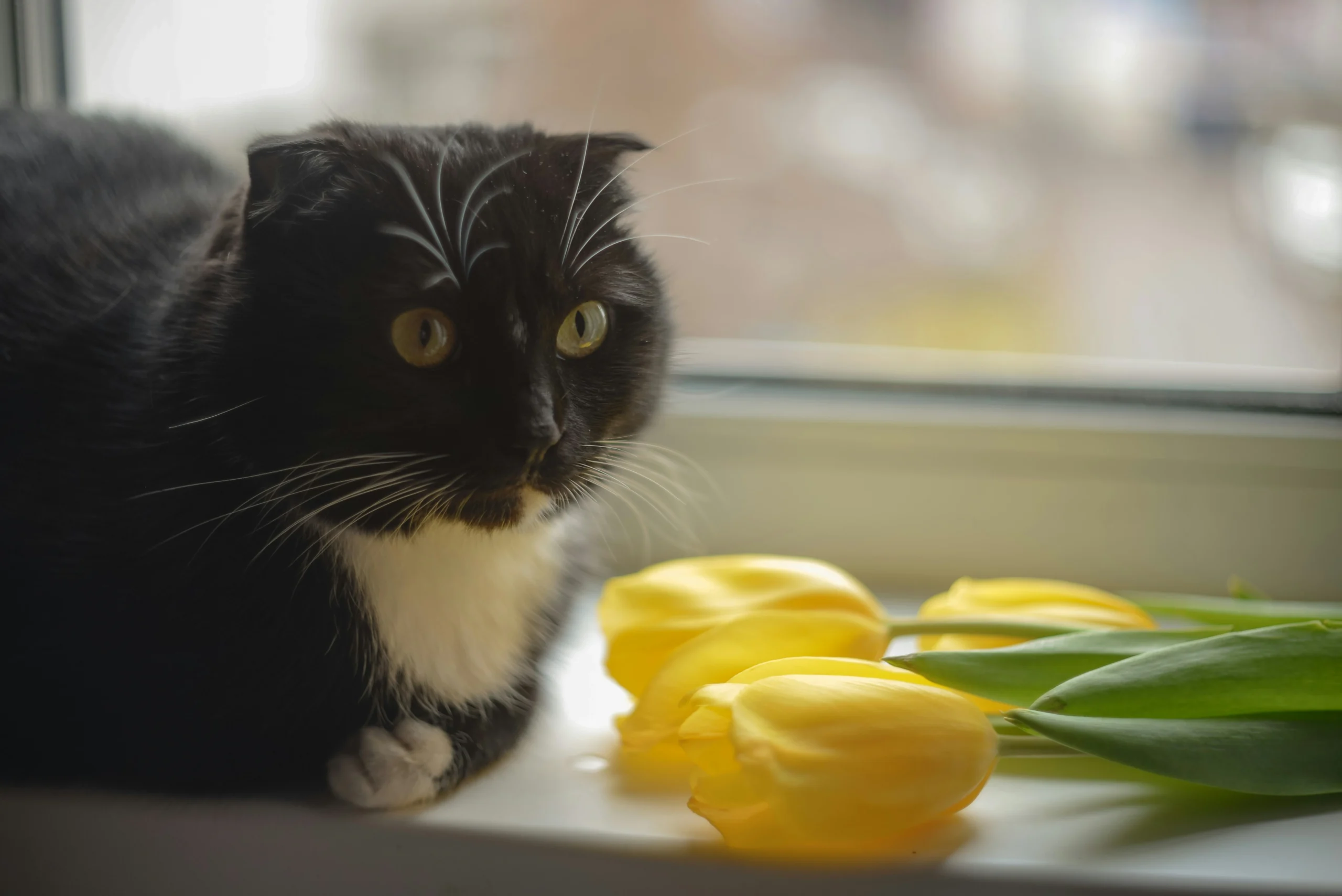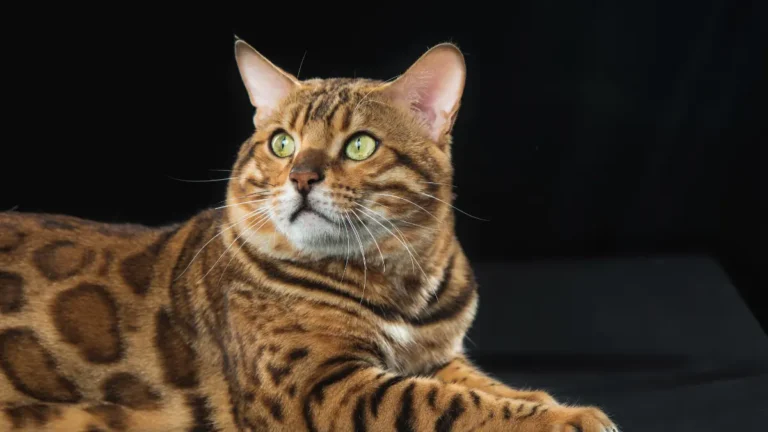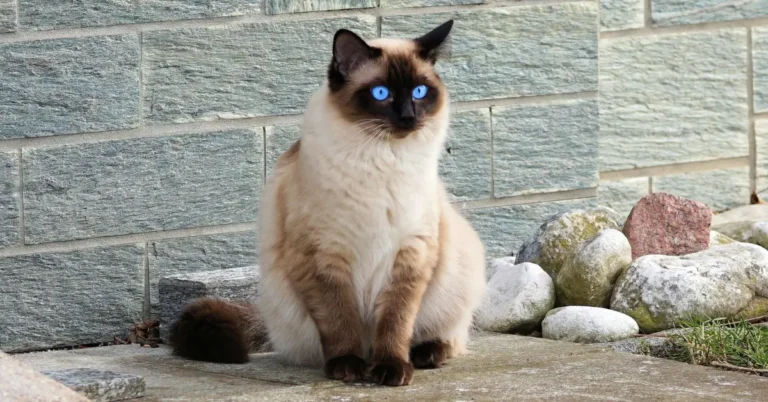Are tulips toxic to cats? It’s a question that often crosses the minds of cat owners who love to decorate their homes with these vibrant flowers. Tulips are known for their striking beauty and have become a favorite choice for indoor and outdoor gardens. However, if you have a curious cat roaming your house, it’s essential to understand how certain plants, like tulips, may affect them. Cats are naturally inquisitive creatures, and when it comes to plants, a little nibble could lead to more than just a stomachache. In this article, we’ll dive deep into everything you need to know about tulips and their impact on your feline friend.
Table of Contents
What Are Tulips?

Tulips belong to the genus Tulipa, a group of flowering plants that bloom in spring. Originating from Central Asia, these beautiful flowers have captured the hearts of many, becoming one of the most widely cultivated plants worldwide. Whether in gardens or bouquets, tulips are everywhere.
The Popularity of Tulips in Homes
Many people enjoy keeping tulip arrangements inside their homes, especially during the spring season. Their vibrant colors and sophisticated look make them ideal for interior decor. However, cat owners often wonder, are tulips toxic to cats? This is an important concern when introducing tulips into a home environment.
Common Concerns for Pet Owners
Cats are naturally curious animals, and they often explore their surroundings by sniffing, pawing, and sometimes eating plants. For pet owners, the presence of toxic plants raises questions like, are tulips toxic to cats? The answer is yes, and the potential danger is real. So, why exactly are tulips toxic to cats? Let’s dive into the science behind tulip toxicity.
Tulip Toxicity in Cats
Why Are Tulips Toxic to Cats?
Tulips contain certain chemical compounds that are harmful to cats when ingested. So, if you’re asking, are tulips toxic to cats, the answer lies in these compounds. The toxic effects can range from mild gastrointestinal discomfort to severe symptoms that require immediate veterinary care.
Toxic Components in Tulips
The primary culprits for tulip toxicity are compounds known as Tulipalin A and Tulipalin B. These chemicals are concentrated mainly in the bulbs of tulips, but they are also present in the petals, leaves, and stems. So if you’ve ever wondered, are tulips toxic to cats, these are the substances responsible.
Tulipalin A and Tulipalin B
Tulipalin A and Tulipalin B are toxic glycosides. When cats come into contact with or consume any part of the tulip plant, these chemicals can cause irritation and other serious symptoms. If you’re still asking, are tulips toxic to cats, keep in mind that the bulb is the most dangerous part, as it contains the highest concentration of these toxins.
How These Toxins Affect Cats
When a cat ingests tulipalin, it can lead to a variety of symptoms that may vary based on the amount consumed. If you’ve been asking yourself, are tulips toxic to cats, the answer becomes clear when you understand that these toxins mainly affect a cat’s digestive system and nervous system, but other bodily functions can also be impacted.
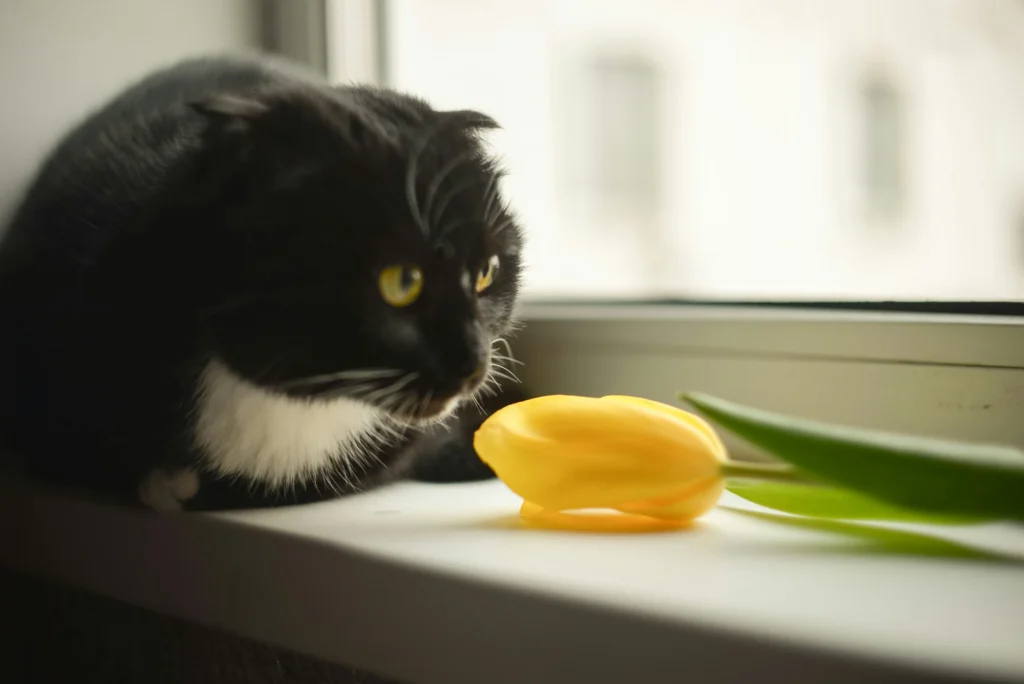
Symptoms of Tulip Poisoning in Cats
If you’re wondering, “are tulips toxic to cats?”, the answer is yes, tulips can pose a serious threat to your feline friend. If your cat has ingested a tulip, they may start showing symptoms within a few hours. Keep a close eye on your pet if you suspect they have come into contact with the plant, especially considering that tulips are toxic to cats.
Gastrointestinal Issues
The most common symptoms of tulip poisoning include vomiting, diarrhea, and excessive drooling. These are clear signs that answer the question: “are tulips toxic to cats?” Cats may also lose their appetite and become lethargic.
Neurological Symptoms
In more severe cases, tulip poisoning can lead to disorientation, tremors, and even seizures. This happens when the toxins affect the nervous system, further emphasizing the answer to “are tulips toxic to cats?”.
Skin and Mouth Irritation
If a cat chews on the leaves or petals, they might develop irritation around their mouth and face. You may notice redness, swelling, or excessive pawing at their face, which is another sign of tulip toxicity. If you’ve ever asked yourself, “are tulips toxic to cats?”, this symptom should be a red flag.
What to Do if Your Cat Eats a Tulip
Immediate First Aid Steps
If you suspect that your cat has eaten a tulip, remove any plant material from their mouth and rinse it with water. Considering that tulips are toxic to cats, try to determine how much of the plant they have ingested and monitor them for signs of distress.
When to Call the Vet
Even if your cat only shows mild symptoms, it’s crucial to contact your veterinarian right away. Given that tulips are toxic to cats, tulip poisoning can escalate quickly, and professional care may be needed. The sooner your cat gets treated, the better the outcome.
What to Expect at the Vet Clinic
At the vet, your cat may undergo a physical examination and possibly blood tests to determine the extent of the poisoning. Since tulips are toxic to cats, your vet may induce vomiting or administer activated charcoal to prevent further absorption of the toxins. IV fluids, medications, or other treatments may also be given to stabilize your cat.
Preventing Tulip Exposure for Cats
Pet-Friendly Alternatives to Tulips
If you’re concerned about whether tulips are toxic to cats, consider replacing them with non-toxic flowers such as roses, sunflowers, or zinnias. These alternatives can provide the same aesthetic appeal without the risk to your pet.
Safe Placement of Tulips
If you must have tulips in your home, ensure they are placed out of your cat’s reach. Since tulips are toxic to cats, keeping them on high shelves or in hanging baskets can help, though remember that cats are excellent climbers and jumpers.
Using Cat Repellents to Protect Cats
Certain pet-safe repellents can be sprayed around plants to deter cats from chewing on them. If you’re concerned about tulips being toxic to cats, consider using citrus scents or commercial cat repellents to create a safer environment.
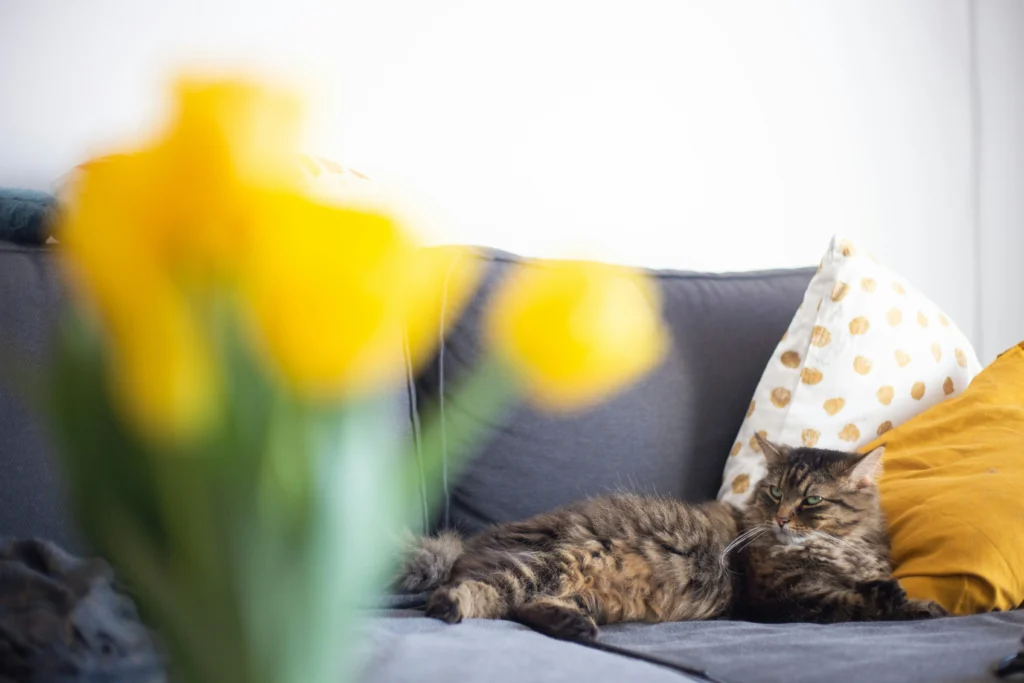
Other Plants Toxic to Cats
Popular Toxic Houseplants to Avoid
Besides tulips, several other common houseplants are toxic to cats. These include lilies, daffodils, and philodendrons. If you’re wondering, are tulips toxic to cats, the answer is yes. It’s important to research any plant before bringing it into a home with pets, especially when asking questions like are tulips toxic to cats.
Plants That Are Safe for Cats
If you’re looking for safe plants to keep around your home, consider spider plants, Boston ferns, or catnip. These plants not only add greenery to your space but are also safe for your feline friends, unlike tulips. When you ask are tulips toxic to cats, it’s equally important to know which plants are safe.
Conclusion: Keeping Your Cat Safe from Toxic Plants
Tulips may be beautiful, but for those asking are tulips toxic to cats, the answer is clear: they pose a real threat to your cat’s health. As a responsible pet owner, it’s essential to be mindful of the plants you introduce into your home. If you have tulips or other toxic plants, take precautions to keep them out of your cat’s reach. Always monitor your pet closely, and if you ever suspect tulip poisoning, seek veterinary help immediately.
FAQs
Are tulips toxic to cats?
Yes, all parts of the tulip, including the bulb, petals, leaves, and stem, contain toxic compounds harmful to cats.
How long does it take for tulip poisoning symptoms to appear in cats?
Symptoms usually appear within a few hours of ingestion, but they can vary depending on the amount eaten and the cat’s size.
Can tulips cause long-term damage to my cat?
If treated promptly, most cats recover fully from tulip poisoning. However, severe cases can lead to long-term health issues.
How can I make my garden safe for my cat?
Consider planting cat-friendly plants like catnip or lavender, and avoid planting toxic varieties like tulips, lilies, or daffodils.
Can cats develop an allergic reaction to tulips without eating them?
Yes, some cats may experience skin irritation or allergic reactions simply by coming into contact with tulip petals or leaves.

